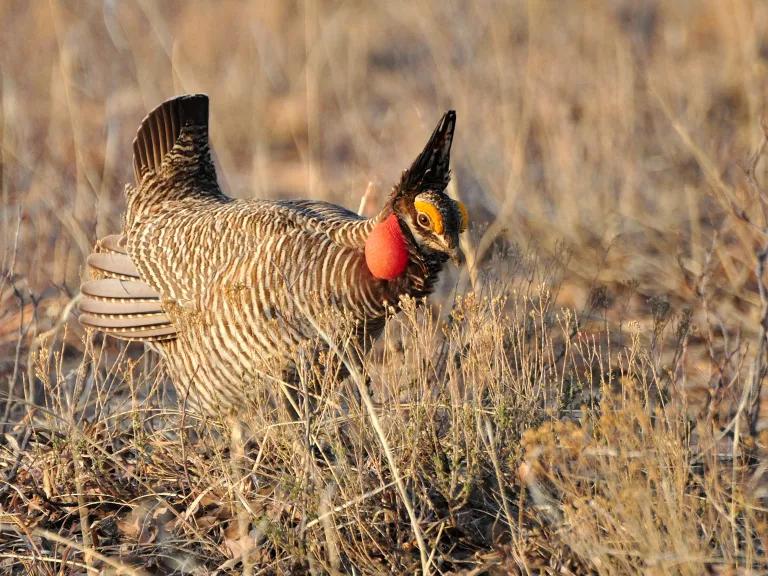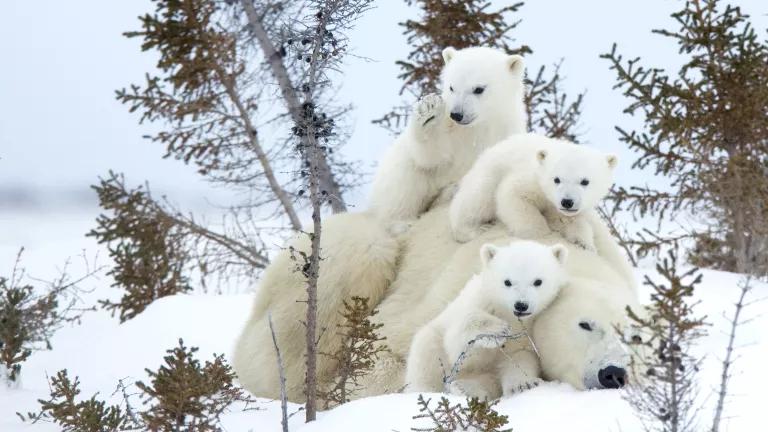Extinction Findings Underscore Need for Strong ESA
Twenty-one long-missing endangered species have been declared extinct. Far from a failure of the ESA, the announcement shows the need for prompt ESA protections.

A labeled Bachman's warbler specimen at the Smithsonian Museum of Natural History. The Bachman's warbler was officially listed as extinct by the USFWS on October 16, 2023.
The U.S. Fish and Wildlife Service has announced that 21 endangered species—including eight species of mussels and ten bird species—have been removed from the endangered species list due to extinction. The unhappy announcement is a stark reminder of the worsening biodiversity crisis. But it is no blemish on the impressive record of the Endangered Species Act (ESA), which for 50 years has been astonishingly successful at bringing species back from the brink of extinction. Instead, these extinctions demonstrate why it is so critical that imperiled species receive the ESA protections they desperately need—before it’s too late.
The ESA was enacted to protect and recover species that are at risk of extinction. It has long fulfilled that purpose and continues to do so. Of the species listed under its care, 99% are still with us today. And many of those species—like the American alligator, bald eagle, peregrine falcon, and Kirtland’s warbler—have experienced remarkable recoveries thanks to the Act’s protections.
Unfortunately, the species recently declared extinct received ESA protections far too late to be effective. In fact, many may have been extinct at the time they were listed. Of the 21 species, seven had not been seen since the ESA was enacted. Fourteen had not been seen since the species was listed under the ESA. And all but one have not been seen after 1990.

Nā Pali Coast State Wilderness Park on Kauai Island, Hawaiʻi. Eight of the extinct species were birds endemic to the Hawai'ian islands, but which have not been seen for decades.
It’s now critical that we do everything possible to prevent additional species from following in their footsteps. But because of funding shortages, political interference, and other factors, hundreds of imperiled species are awaiting ESA protections that they desperately need.
Existing protections for threatened and endangered species are also constantly under attack. In 2020, the Trump administration enacted dozens of changes to ESA protections, weakening just about every aspect of those protections. The Biden administration has repealed or proposed to repeal many of those rollbacks, but more action is desperately needed to restore the ESA to its former strength.
And ESA protections are constantly subject to attacks from members of Congress seeking to line the pockets of their special interest donors. Earlier this summer, Congress advanced a series of bills that would have permanently overturned science-based decisions by the Fish and Wildlife Service to protect two imperiled species—the Lesser prairie chicken and the Northern long-eared bat. Thankfully, President Biden vetoed both bills. But a similar measure is still in play that would block another rule to restore protections for species’ critical habitat.

Meanwhile, some lawmakers are trying to use annual appropriations bills to reduce or eliminate critical funding needed for federal agencies to implement the ESA. These include harmful policy provisions that seek to block protections for iconic species like grizzly bears and gray wolves. Sadly, these attempts aren’t new: throughout this Congress, we’ve seen numerous bills introduced that would undermine the ESA’s scientific basis, limit its use and water down its effectiveness. In fact, the House Natural Resources Committee has announced another hearing this week that highlights some of these damaging bills.
As we approach the 50th anniversary of the ESA, we should be protecting, restoring, and fully utilizing our nation’s most powerful wildlife protection law. But if anti-wildlife lawmakers get their way, the Service’s recent extinction announcement will be one of many, exacerbating the dual biodiversity and climate crises. We cannot—and will not—let that happen.





